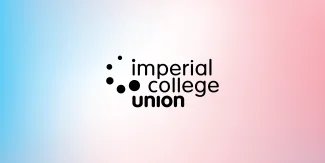LGBTQ+ History Month is celebrated every February in the UK, designed to claim the past, celebrate the present, and create the future. We can’t wait to share these stories with you over February and celebrate with the Imperial community.
Long before the arrival of colonial forces, the Philippines boasted a rich tapestry of cultures and societies, each with its unique customs and attitudes toward gender and sexuality. Filipinos, before the influence of the Spaniards (between 1565-1898) were animists, believing that all things had a distinct spiritual essence. In this exploration, we delve into the pre-colonial era of the Philippines to uncover the diverse and inclusive perspectives that once characterised the archipelago.
‘Babaylans’, ‘Asogs’, ‘Bayoks’, and the Spiritual Spectrum
The Philippines' pre-colonial society is thought to have been matriarchal before turning patriarchal, reflecting gender multiplicity, plurality, and diversity. Women were highly esteemed due to their role in procreation, which bestowed upon them not only the ability to give life but also an extended capacity for healing. There was power in the feminine.
Pre-colonial Filipino societies recognised and revered spiritual leaders known as babaylans. These revered figures engaged in various rituals and ceremonies and were often believed to possess a spiritual duality, embodying both masculine and feminine energies. Babaylans were specialists in herbal and divine lore and communicated to the spirit world. Babaylans weren’t strictly born females, some were born males, while some may fall into the middle, or people with diverse sex characteristics (intersex). Their existence challenged the binary concepts of gender and sexuality imposed by later colonisers, emphasising a holistic view that included the full spectrum of human identity.
Discrimination against gender, at least what they defined gender to be, was nonexistent in old Philippine culture. Pre-colonial Philippines acknowledged the existence of asog or bayok, male individuals who transcended conventional gender roles. It was also thought that gender transcendence extended not just to mortals but also to immortals, with several dimly remembered folklore deities identified as queer.
Lakapati/Ikapati – the Filipino Deity of Fertility and Agriculture
Also known as Ikapati, Lakapati stands as a captivating figure in the pantheon of pre-colonial Philippine mythology, embodying the essential principles of fertility, balance, and interconnectedness.
Lakapati is primarily recognised as a deity of fertility, overseeing the bountiful harvests and ensuring the prosperity of agricultural endeavours. Communities across pre-colonial Philippines honoured Lakapati through rituals and offerings, seeking blessings for abundant crops and successful harvests. Devotees engaged in ceremonies to honour Lakapati, often involving symbolic offerings of crops, fruits, and handmade crafts. These rituals were a manifestation of gratitude and a plea for continued fertility and abundance in the community.
Lakapati’s biological sex does not fit into the binary categories of male and female – many believed that she had both male and female genitalia which act as a symbol of the balance in the world. Her representation as a hermaphrodite or a gender-fluid entity signifies the interconnectedness of masculine and feminine energies. This duality reflects the coordinateness of the agricultural cycle, emphasising the cyclical nature of growth, harvest, and regeneration.
Gender-neutral pronouns
As outlined previously, discrimination against gender didn’t exist back in pre-colonial Philippines, and some aspect of this is still seen to this day through some of our words.
Baybayin is an alphasyllabary Filipino script mainly used in the northern regions of the country. It was employed in the periods preceding and during the 16th and 17th centuries, only to be supplanted by the Latin alphabet when the Spanish colonisation took place. It is noteworthy that, during this era, the Philippines boasted a universal literacy rate of 100%, encompassing not only men but also women who possessed the ability to read, write, and teach furthering the idea of being an egalitarian nation.
Now, Baybayin is mainly only practiced as a hobby, but many of the words and sounds remain to be used today, seen in our pronouns. Pronouns in Tagalog do not categorise gender, for example:
Singular: Ako/ko (me), ikaw/mo/ka (you), siya (he/she)
Plural: Kami (we, us), sila (they, them), tayo (we), kayo (you, plural form)
A prevalent belief is that our forebears did not find it necessary to categorize individuals strictly as either male or female. Instead, they embraced the concept of balance, acknowledging the simultaneous presence of feminine and masculine energies, hence the gender-neutral pronouns.
Conclusion
Pre-colonial Philippines painted a portrait of a society that celebrated diversity and embraced a fluid understanding of gender and sexuality. These historical narratives challenge contemporary perceptions, highlighting that the acceptance of LGBT individuals is not a recent development but an intrinsic part of the country's covered heritage. It is important to be aware of the widespread unqueering and dequeering of our people, and as we reconnect with this rich past, let us carry forward the lessons of inclusivity, understanding, and appreciation for the diverse identities that have shaped the Philippines for centuries.
Written by James Owen Villanueva
LGBTQ+ Community Engagement Officer
